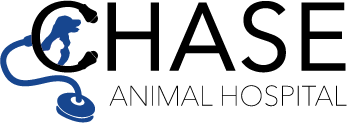Pet Health Articles
-
Several products are available to help with behavior management in cats. Various products promote play and exercise, provide cognitive stimulation, allow safe outdoor exploration, and assist with anxiety or undesirable behavior (as part of your veterinarian's treatment program for these problems).
-
There are numerous products on the market that have been designed to help prevent undesirable behavior in dogs. Leashes, harnesses, and head halters are needed to keep pets under control, especially when outdoors.
-
Foraging toys are designed to provide mental and physical exercise and enjoyment by simulating hunting and seeking for food. Both dogs and cats are natural hunters and scavengers. They benefit from exercising this part of their brain on a regular basis. Providing enrichment in the form of foraging toys can decrease boredom, improve enjoyment, and encourage dogs and cats to engage in species-specific behaviors in a desirable way.
-
Foraging toys are great for dogs and cats. They can be filled with treats or with the pet's regular food as an alternative to feeding from a dish. They offer mental and physical exercise while also providing benefits from sensory stimulation as they search for their meals. Dogs in particular benefit from the opportunity to solve puzzles in order to access food.
-
The Belgian Malinois is an intense, sensitive individual who is willing to dedicate himself not only to his jobs, but also to his human.
-
The Belgian Sheepdog is the long-coated, black version of what some people consider one breed, the Belgian Shepherd (or Continental Shepherd). Like all the members of this family, the Belgian Sheepdog is an active and intense companion, as well-suited for police work as for herding chores.
-
Intelligent and energetic, Belgian Tervurens are happiest with a job to do. They are loyal and form strong bonds, so they must be part of the family, not isolated or left outdoors.
-
Benign fibrous skin tumors can go by many names and in many cases don't need treatment. Surgical excision can be curative unless certain types are due to an underlying tumor elsewhere. The main focus in many cases is addressing underlying allergies or sources of pressure. To adequately diagnose these tumors, a biopsy and histopathology are usually necessary.
-
Mammary tumors develop due to abnormal reproduction of the cells that make up the breast tissue. They can be benign or malignant. The incidence of these tumors is related to hormone status, specifically whether a dog is intact or has had an ovariohysterectomy, age, and breed. Because dogs can have both benign and malignant tumors at the same time, surgical removal and histopathology of all tumors are very important.
-
Bergamascos are easygoing, balanced, and observant, and tend to bond strongly with their owners. They are patient and tolerant with children, making them excellent family guardians and companions.

